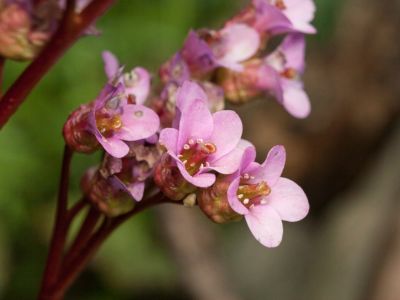Controlling Bergenia Pests
Slugs and snails are slimy pests that can easily eat their way through bergenia leaves in nothing flat. Confirm they’ve invaded your flower bed by the jagged holes they chew in the leaves and the silvery trails they leave behind. Here are a few helpful tips for controlling slugs and snails: Limit mulch to 2 inches (5 cm.) or less. Mulch provides a moist, safe hiding place for slugs and snails. Keep flower beds free of leaves and other plant debris. Water only when necessary, as slugs and snails thrive in moist conditions. Sprinkle diatomaceous earth around bergenia and other plants. The fossilized mineral product is nontoxic but will kill slugs and snails by abrading their outer covering. Set out traps to catch slugs in evening and early morning. Damp burlap bags and boards work well, and you can destroy the slugs hiding underneath in the morning. You can also try pouring a little beer in a jar lid. If you aren’t squeamish, grab a flashlight and a pair of gloves and hand-pick slugs and snails in the evening. Commercial slug baits are effective but should be used with great care if you have children or pets. Nontoxic baits are also available. Weevils, a type of beetle, are probably the most problematic of all bergenia pests. The white, C-shaped grubs cause a great deal of damage from autumn until early spring. Adult weevils, which are moist active from spring to late summer, are dark gray to black with a long snout and a rough shell. The good news is that weevils don’t always kill bergenia, but they leave an unsightly “notched” appearance as they eat their way around the leaves. You can easily pick off weevils you find on the plants as they feed at night. Otherwise, bergenia pest treatment for weevils can be accomplished by spraying the plants with insecticidal soap. Repeat treatments are usually necessary.
